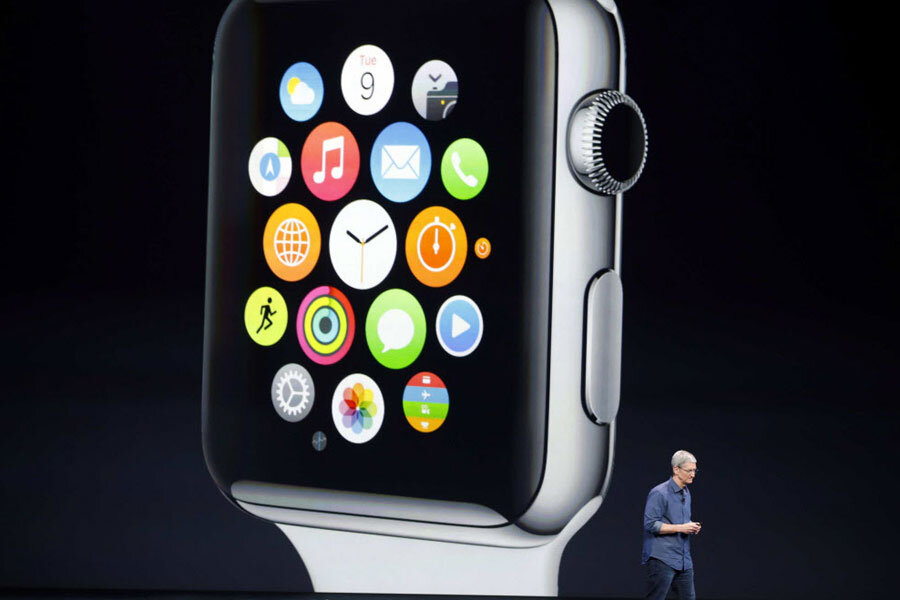Did Apple dream too big with the Apple Watch?
Loading...
As Apple’s April deadline for the Apple Watch approaches, the tech giant seems to have found itself biting off more than it could chew.
According to Wall Street Journal insiders, Apple’s dreams of a “state-of the-art health-monitoring device” are falling a little short. The smart watch initially had plans to measure heart activity, stress levels, blood pressure, and blood-oxygen levels, but Apple found these health-tracking features either failed to meet its notoriously high standards or would require government oversight.
The watch was designed to track heart activity and stress levels by measuring the conductivity of skin (or how much you sweat), but individuals with hairy arms or dry skin found it difficult to get accurate readings, according to the Journal. The watch also failed to work properly when worn too loosely.
Apple additionally saw “promise” in electrocardiogram (EKG) technology to measure blood pressure and blood-oxygen-levels, but met regulation roadblocks from the US Food and Drug Administration. The agency’s oversight includes providing medical advice or guidance from this type of data.
While Apple may have tabled these ideas from the original launch, the company may include them in later versions of the device.
As the Journal reports, the four-year Apple Watch project internally became known as a “black hole,” sucking in resources as the tech giant focused on making the next great health/fitness product. Without these health-tracking features, many have questioned what the point of an Apple Watch is.
Apple has been pushing the new device as a high-end accessory (which is likely why it brought the watch to Paris Fashion Week). The company plans for the base model to start at $349, but there will be 18-karat gold casing that is predicted to be Apple’s most expensive product ever made, possibly topping the $4,000 price tag for its high-end Mac Pro.
The company also has big plans for Apple Pay's expansion. According to 9to5Mac, Apple is expanding its mobile payment system to Canada and is in talks with Germany-based banks to work on WatchKit apps, which would make sense considering Apple Pay will soon be accepted on all JetBlue flights.
9to5Mac went on to report that Apple has turned to “several third party App Store developers” to help finish applications before the smart watch’s release date. The company has held multiple workshops at its Cupertino, Calif., offices for more than 100 different developers.
According to the Journal, Apple has ordered 5 million to 6 million Apple Watches from Asian suppliers for the first fiscal quarter, and ABI Research is estimating Apple will move around 11.8 million watches in 2015.
But even as Apple rushes to convince consumers its newest (partially unraveled) product is worth the buy, the device is currently nothing more than a glorified iPhone accessory. For the wireless connectivity or global positioning-system to work, the smart watch needs to remain close to a phone, which is arguably its biggest flaw.
With Apple finally unveiling an entirely new product, many were expecting a monumental device that would reshape wearable tech, like what the iPod did for music or the iPhone did for mobile and Internet devices, but Apple Watch may become just another face in the crowd. With critics predicting a revenue shortfall, Apple is not likely to reinvent the wearable tech market, at least not this time around.






